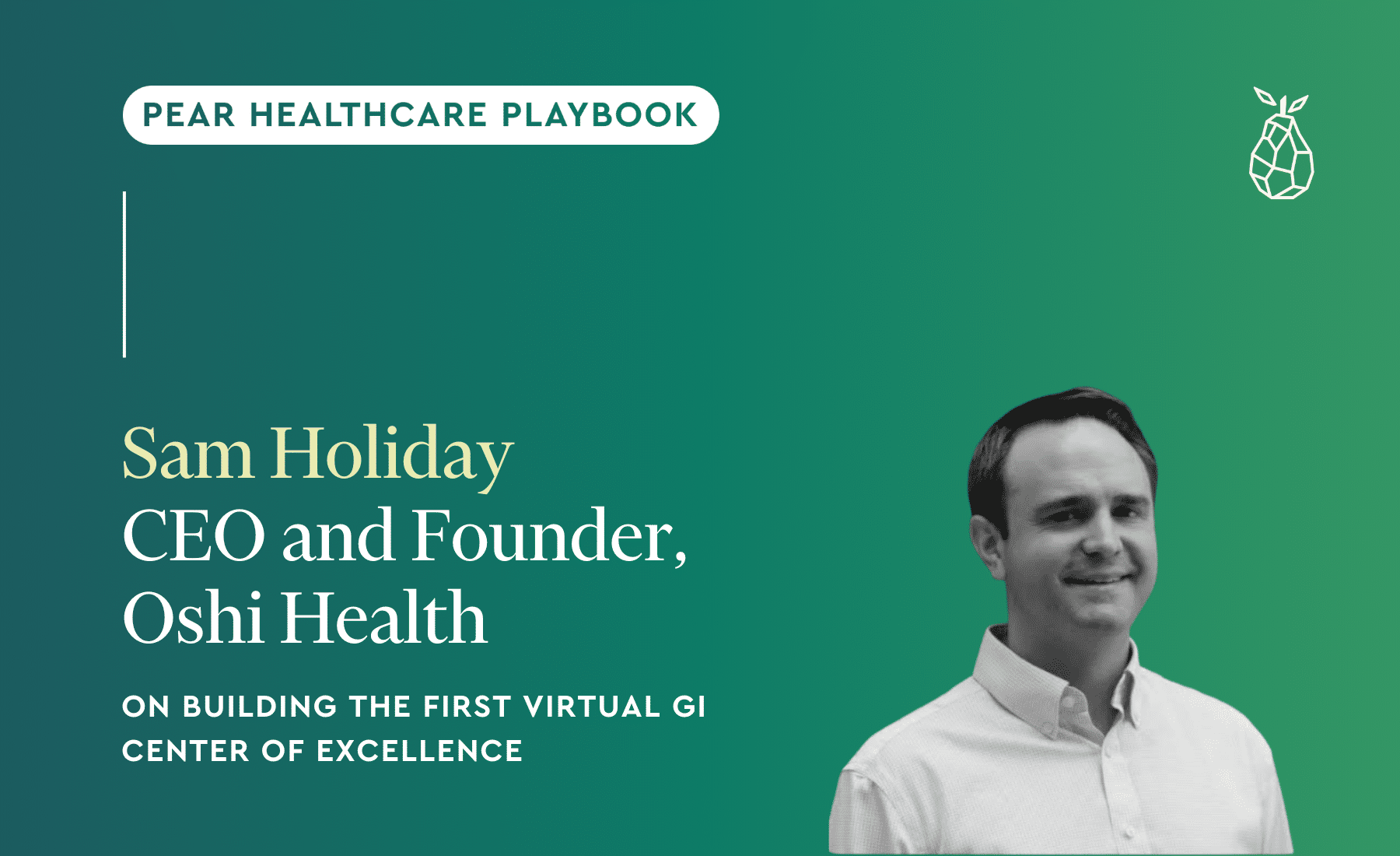American Medical Association Spotlights Oshi Health as a ‘Future of Health’ Case Study

The American Medical Association (AMA) recently featured Oshi Health as a case study in its “Driving the Future of Health” showcase, as part of an initiative to share real-world examples of successful collaborations between physician practices and digital health companies that improve care delivery practices. Alongside pioneering brands like One Medical, Mayo Clinic, Omada Health, Ochsner Health, and others, the AMA underscored Oshi Health’s innovative hybrid model supplementing local gastroenterology providers with a virtual multidisciplinary care team that improves patient outcomes, enhances experiences, and reduces avoidable costs.
“We are honored to have our work and achievements chronicled alongside fellow ground-breaking leaders in digital health,” said Sameer Berry, MD, MBA, Chief Medical Officer at Oshi Health. “At Oshi we have enthusiasm for the dawning era in healthcare, where the convergence of aligned incentives, a better understanding of how to treat chronic conditions, and advancements in care delivery structures will pave the way for transformative change in complex subspecialty care.”
The AMA Oshi Health case study outlines the key tenets and benefits of the Oshi hybrid model, how it integrates with in-person care teams, and its alignment with the six Future of Health Foundational Pillars:
#1 – Build for patients, physicians, and clinicians
Oshi Health patients have 24/7 access to virtual multidisciplinary GI care – including advanced practice providers, registered dieticians, licensed psychologists, clinical social workers, and care coordinators who work in partnership with local clinicians to provide wrap-around care that improves outcomes. Oshi clinicians enjoy true relationship-based care and being given the tools to measure patients’ meaningful clinical and quality of life improvements, and Oshi care coordinators alleviate between-visit demands for Oshi providers and in-person providers alike.
#2 – Design with an equity lens
Oshi Health’s virtual model enables care delivery in healthcare deserts while maintaining cultural and geographic sensitivity related to food options and choices.
#3 – Recenter care around the patient-physician relationship
Oshi Health prioritizes the time and support necessary to achieve lasting symptom control for patients, delivering high-touch, iterative care through the patient’s multidisciplinary care team to get to the roots of symptom triggers, and to personalize dietary education and gut-brain interventions. This includes providing members with easy-to-navigate tools to message their care team, further their health education, and track their progress.
#4 – Improve and adopt payment models that incentivize high-value care
Oshi Health developed the first comprehensive value-based contract for GI care with Aetna, replicated with other national and regional plans, to make available proven interventions such as dietary and behavioral health support that have never been widely available or reimbursed in traditional fee-for-service GI care – yet are often the first-line recommended treatment for many GI conditions. Currently, Oshi is available in-network to over 30 million people in the United States.
#5 – Create technologies and policies that reduce fragmentation
In order to reduce fragmentation in the broader ecosystem, Oshi Health prioritizes relationships with gastroenterologists, primary care providers (PCPs), and other providers in local communities. Oshi does this by integrating in-person and virtual care to enable the sharing of information across care teams to ensure coordination and continuity of care.
#6 – Scale evidence-based models quickly
Oshi Health continues to scale access through in-network partnerships with health plans, employers, and in-person GI clinics across the country.
The AMA case study also documents how Oshi Health’s virtual care model is measured according to its “Return on Health” framework. The AMA notes that Oshi’s model provides superior access to care, with appointments available in three days, and patients averaging ten visits over their first full year of care. Members are enthusiastic about this level of support with 98% reporting satisfaction and a Net Promoter Score over 80.
This level of care is also highly effective at delivering improved patient outcomes. Data published at the Institute for Healthcare Improvement, American Telemedicine Association, and American College of Gastroenterology has shown that 92% of Oshi members achieve symptom control, often in less than four months. This clinical trial also demonstrated that Oshi’s care resulted in all-cause medical cost savings of $10,200 per patient in six months driven by decreases in avoidable imaging, ER visits, and appropriate medication utilization.
Read the full case study here: https://www.ama-assn.org/system/files/future-health-case-study-oshi-health.pdf


